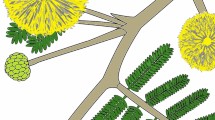Summary
The present study was conducted to evaluate the effects of 3 common metal chelating drugs on selected biochemical and immunotoxicological variables in rats. The animals were treated consecutively for 15 days with equimolar doses of calcium disodium ethylenediamine tetra-acetic acid (CaNa2EDTA), meso 2,3-dimercaptosuccinic acid (DMSA), or 2,3-dimercaptopropane 1-sulfonate (DMPS). The results indicate that none of the 3 drugs appear to have potential immunotoxic effects. However, the elevated serum transaminase activity, reduced glutathione contents, and plasma alkaline phosphatase activity following CaNa2EDTA administration indicate that caution is warranted with the prolonged use of CaNa2EDTA.
Similar content being viewed by others
References
Aposhian HV. Biological chelation: 2,3-dimercaptopropane sulphonic acid and meso 2,3-dimercaptosuccinic acid. Advances in Enzymes Regulations 20: 301–319, 1982
Aposhian HV. DMSA and DMPS — water-soluble antidotes for heavy metal poisoning. Annual Reviews in Pharmacology and Toxicology 23: 193–215, 1983
Aposhian HV, Aposhian MM. Meso 2,3-dimercaptosuccinic acid: chemical, pharmacological and toxicological properties of an orally effective metal chelating agent. Annual Review of Pharmacology and Toxicology 30: 279–306, 1990
Berlin A, Schaller KH. European standardized method for the determination of Δ-aminolevulinic acid dehydratase activity in blood, Zeitschrift für Klinische Chemie und Biochemie 12: 389–390, 1974
Beuter E. Drug induced hemolytic anemia. Pharmacological Reviews 21: 73–103, 1969
Cantilena LR, Klaassen CD. The effect of chelating agents on the excretion of endogenous metals. Toxicology and Applied Pharmacology 63: 344–350, 1982
Cheh AM, Neiland JB. The Δ-aminolevulinic acid dehydratase: molecular and environmental properties. In Dunitz et al. (Eds) Structure and binding, Vol. 29, p. 137, Springer Verlag, Berlin, 1976
Chisolm Jr JJ. Evaluation of the potential role of chelation therapy in treatment of low to moderate lead exposure. Environmental Health Perspectives 89: 67–74, 1990
Cory-Slechta DA. Mobilization of lead over the course of DMSA chelation therapy and long-term efficacy. Journal of Pharmacology and Therapeutics 246: 84–91, 1988
Cunningham AJ, Szenberg A. Furthur improvements in the plaque technique for detecting single antibody forming cells. Immunology 14: 599, 1968
Ding GS, Liang Y. Antidotal effects of dimercaptosuccinic acid. Journal of Applied Toxicology 11: 7–14, 1991
Ellman GL. Tissue sulphydryl groups. Archives of Biochemistry and Biophysics 82: 70–77, 1959
Exon JH, Koller LD, Talcott PA, O’Reilley CA, Henningsen GM. Immunotoxicity testing: an economical multiple assay approach. Fundamental and Applied Toxicology 7: 387–397, 1986
Gentry PA, Rose ML, Chan PK. Effect of T-2 toxic on burine haematological and serum enzyme parameters. Veterinary and Human Toxicology 26: 24–48, 1984
Graziano JH, Lolacono NL, Meyer P. Dose response study of oral 2,3-dimercaptosuccinic acid in children with elevated blood lead concentration. Journal of Pediatrics 113: 751–757, 1988
Hammond PB. The relationship between inhibition of A-aminolevulinic acid dehydratase and lead mobilization by ethylenediaminetetraacetate (EDTA). Toxicology and Applied Pharmacology 26: 466–475, 1973
Hurley LS. Teratogenic aspects of manganese, zinc and copper nutrition. Physiological Reviews 61: 249–295, 1981
Jollow DJ, Mitchell JR, Zampaglione Z, Gillette JR. Bromobenzene induced liver necrosis. Protective role of glutathione and evidence for 3,4-bromobenzene oxide as the hepatotoxic metabolite. Pharmacology 11: 151, 1974
King EJ, Armstrong AR. In Wooton IDP (Ed.) Microanalysis in medical biochemistry, pp. 101–103, Churchill, London, 1964
Klaassen CD. Heavy metals and heavy metal antagonists. In Goodman and Gilman. The pharmacological basis of therapeutics. Gilman et al. (Eds), Ch. 69, pp. 1615–1637, Macmillan, New York, 1980
Reitman S, Frankel S. A colorimetric method for the determination of serum glutamic oxaloacetic and glutamic pyruvic transaminases. American Journal of Clinical Pathology 28: 56–63, 1957
Sigel H. Zinc and its role in biology and nutrition. In Metal ions in biological system. Vol. 15, Marcel Dekker, New York, 1983
Tandon SK, Behari JR, Ashquin M. Effect of thiol chelators on trace metal levels. Research Communication in Chemical Pathology and Pharmacology 42: 501–504, 1983
Tandon SK, Jain VK, Mathur AK. Effect of chelators on excretion and tissue levels of essential trace elements. Environmental Research 35: 237–245, 1984
Vomen B, Marland J. Isolated rat hepatocytes in suspension: potential hepatotoxic effects of six different drugs. Archives of Toxicology 56: 33–37, 1984
Zatlin GS, Senaldi EM, Bruckheim AH. Adult lead poisoning. American Family Physician 32: 137–143, 1985
Author information
Authors and Affiliations
Rights and permissions
About this article
Cite this article
Flora, S.J.S., Kumar, P. Biochemical and Immunotoxicological Evaluation of Metal Chelating Drugs in Rats. Drug Invest. 5, 269–273 (1993). https://doi.org/10.1007/BF03259591
Published:
Issue Date:
DOI: https://doi.org/10.1007/BF03259591




